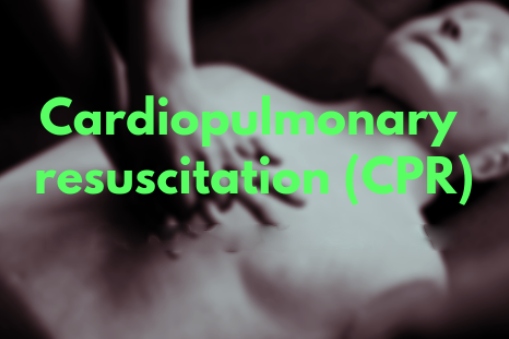CPR Steps
Cardiopulmonary resuscitation (CPR) can help save a life during a cardiac or breathing emergency. The simple step by step guide below will help someone in need.
Before Giving CPR
1. Check the scene and the person. Make sure the scene is safe, then tap the person on the shoulder and shout “Are you OK?” to ensure that the person needs help.
2. Call 911 for assistance. If it’s evident that the person needs help, call (or ask a bystander to call) 911, then send someone to get an AED. (If an AED is unavailable, or a there is no bystander to access it, stay with the victim, call 911 and begin administering assistance.)
3. Open the airway. With the person lying on his or her back, tilt the head back slightly to lift the chin.
4. Check for breathing. Listen carefully, for no more than 10 seconds, for sounds of breathing. (Occasional gasping sounds do not equate to breathing.) If there is no breathing begin CPR.
Red Cross CPR Steps
1. Push hard, push fast. Place your hands, one on top of the other, in the middle of the chest. Use your body weight to help you administer compressions that are at least 2 inches deep and delivered at a rate of at least 100 compressions per minute.
2. Deliver rescue breaths. With the person’s head tilted back slightly and the chin lifted, pinch the nose shut and place your mouth over the person’s mouth to make a complete seal. Blow into the person’s mouth to make the chest rise. Deliver two rescue breaths, then continue compressions.
Note: If the chest does not rise with the initial rescue breath, re-tilt the head before delivering the second breath. If the chest doesn’t rise with the second breath, the person may be choking. After each subsequent set of 30 chest compressions, and before attempting breaths, look for an object and, if seen, remove it.
3. Continue CPR steps. Keep performing cycles of chest compressions and breathing until the person exhibits signs of life, such as breathing, an AED becomes available, or EMS or a trained medical responder arrives on scene.
Note: End the cycles if the scene becomes unsafe or you cannot continue performing CPR due to exhaustion.- Culled from redcross.org
Do you sometimes wonder what to do with Idle funds? Should you buy bonds or stock? Invest in real estate? Explore high yielding deposits?
Let’s help you decide! Talk to us today!
Thank you for reading!



